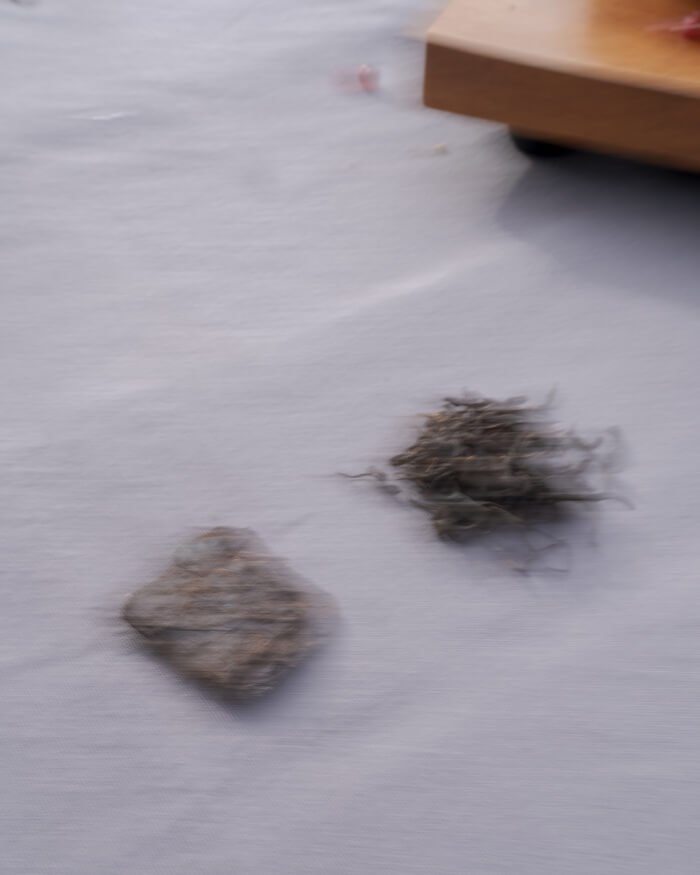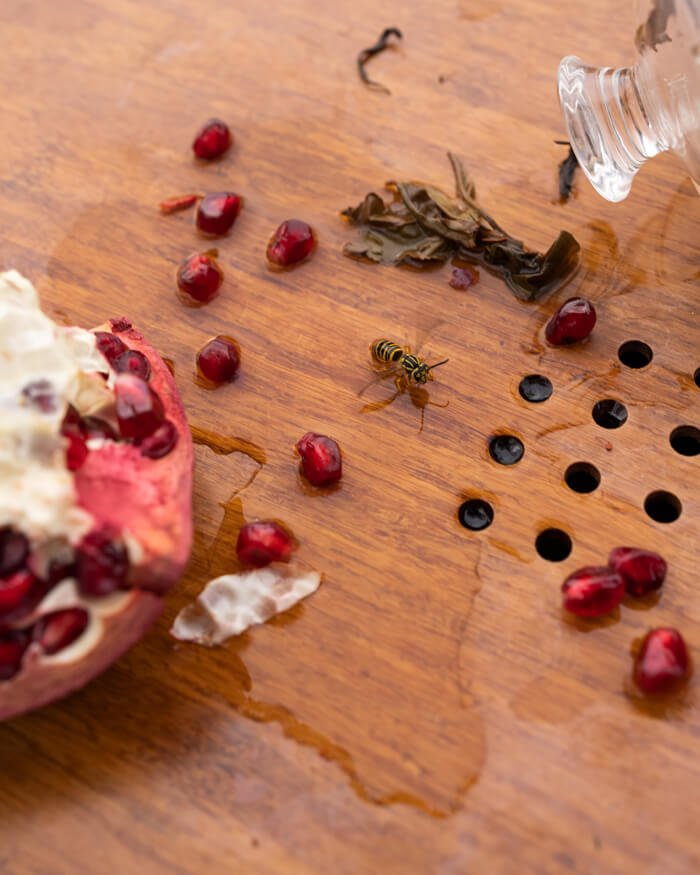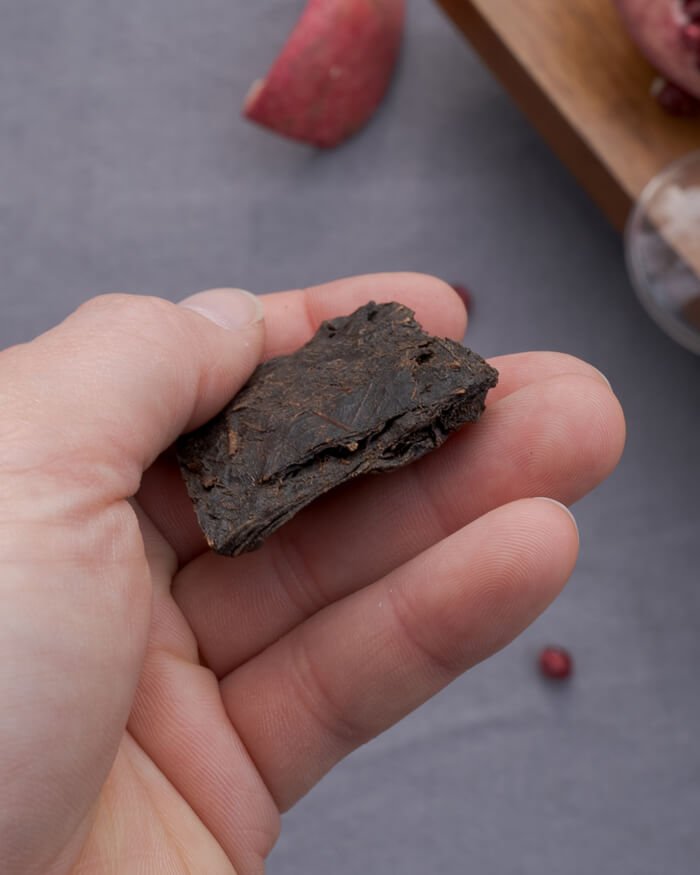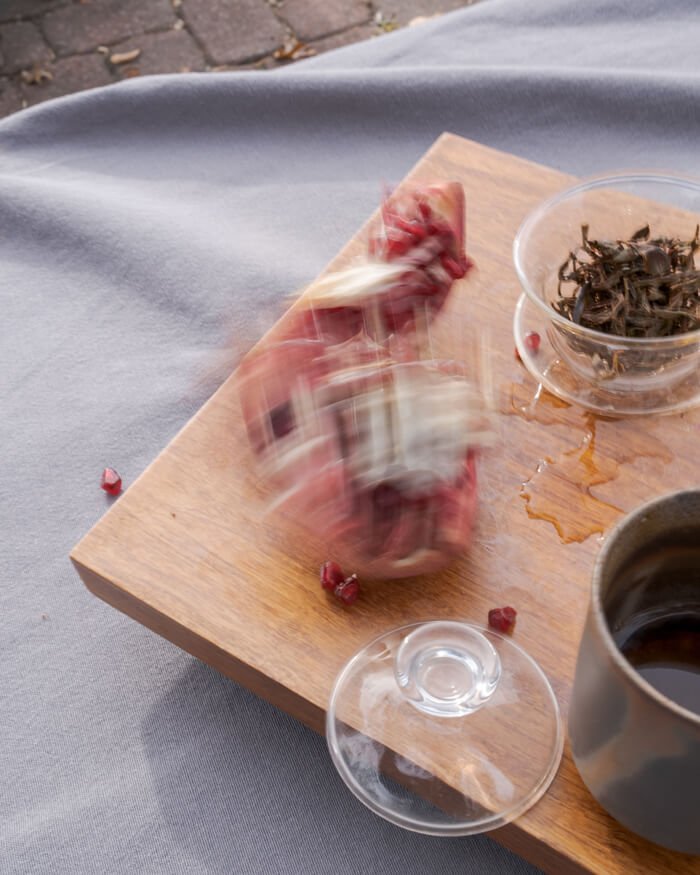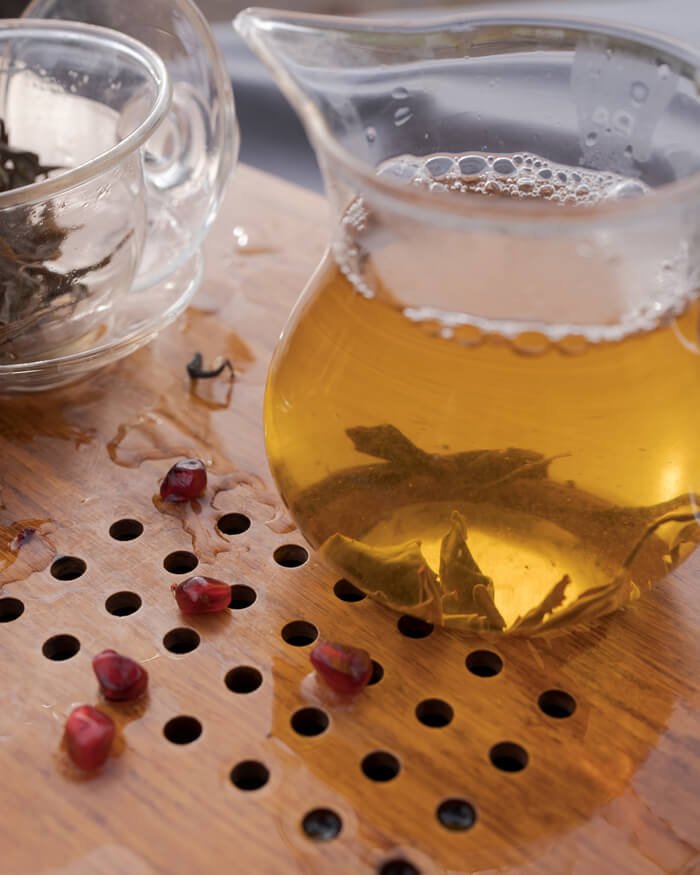Is Red Tea the Same as Black Tea?
When it comes to Tea, there are few things more confusing than red tea versus black tea.
And the reason is that we have a problem with translations.
What we call “Black Tea” in the west is actually what would be considered “Red Tea” in the East - specifically in China.
This is even more confusing because one of the 6 categories of tea is called “Black Tea” in China…
Which is nothing like the “Black Tea” here in the west!
Black Tea in China (known as Hei Cha) is known as “Dark Tea”, or Post-Fermented Tea, here in the United States -- but the literal translation of “Hei Cha” is “Black Tea.”
Is your head spinning yet?
Don’t worry.
I’ll clear everything up here.
The 6 Categories of Chinese Tea
Real fast, I want to just touch on the 6 categories of tea.
I’ll do this in 3 cells:
The name of the tea is in Chinese.
The literal translation of the name.
What we call the tea in the West.
The literal English translation, and what we call the tea in West.
| Chinese Name | Literal Translation | Tea Name in the West |
|---|---|---|
| Lu Cha 綠茶 | Green Tea | Green Tea |
| Huang Cha 黃茶 | Yellow Tea | Yellow Tea |
| Bai Cha 白茶 | White Tea | White Tea |
| Wu Long (Oolong) Cha 烏龍茶 | Black Dragon Tea | Oolong Tea |
| Hong Cha 紅茶 | Red Tea | Black Tea |
| Hei Cha 黑茶 | Black Tea | Dark Tea |
Right off that bat, you’ll notice a problem.
The literal translation of Hong Cha is Red Tea… but we call it Black Tea in the west!
And The literal translation of Hei Cha is Black Tea… but Black Tea was always “taken” in the west… so we just called it Dark Tea.
Oolong:
You might have noticed that “Wu Long (Oolong)” Tea is a bit… odd, in its translation.
“Wu Long” in Chinese sounds like “Oolong”, which is where the English name Oolong came from.
You’ll notice on the entire Ooika blog, we write “Wu Long (Oolong)” out every time we want to just write “Oolong.”
That’s because we want to preserve clarity and correct terminology.
Also! As to why Wu Long (Oolong) Tea is “Black Dragon”, check out our article on what is Chinese Wu Long tea?
Anyway, with that out of the way, we can move on.
What is Red Tea?
Red Tea is what we would call “Black Tea” in the West in Chinese-speaking countries.
It’s a tea that has been fully oxidized, whereas green tea would not be oxidized.
While green tea is fresh, grassy, and often astringent...
This oxidation process transforms these notes and brings out chocolate, maltiness, and sweetness, like ripe plums.
While red teas like Lipton have their places in the world…
Red teas made with care and from well-known terroirs will have a depth of flavors and aromas that invoke a deep warmth.
One of my favorite red teas is Qi Men (Keemun Tea) and Dian Hong (both of which you can read more about here.)
What is Black Tea?
Black Tea (Hei Cha) is a post-fermented category of tea that is nothing like what we call “Black Tea” in the west (as that’s actually Red Tea.)
This style of tea is microbially fermented, oftentimes by being stacked, wetted, and covered - creating a warm and moist environment.
Uh Oh
Here’s where things get even more confusing…
In the world of tea, you’ll often hear the word “fermentation”, in reference to making Red Tea, White Tea, and Wu Long (Oolong Tea.)
In this case, it’s actually enzymatic reactions in the tea leaf when it’s exposed to Oxygen -- in other words, oxidation.
Enzymatic fermentation (oxidation!) should not be confused with microbial fermentation!
Black Tea (Hei Cha) is the only category of tea that is microbially fermented - similar to wine or cheese.
The main microorganism responsible for 80%+ of the fermentation in Shou Pu (a famous Black Tea that’s easily accessible on the tea market) is actually a fungus known as Aspergillus niger.
You might not have heard of A. niger before, but you’ve definitely seen it before -- it’s the black mold that grows on fruits, vegetables, and meats.
(But don’t worry, it’s totally safe -- and in fact, Black Tea is super healthy.)
As I kinda mentioned, Shou Pu is a form of Black tea --
Just like sparkling wine is called Champagne if it’s made in Champagne…
A Black tea that’s made in Yun Nan province is called a Shou Pu.
(It can only be called Shou Pu if it’s from Yun Nan!)
But you can get Black tea from lots of places, even Japan -- such as their sour, lactic-acid-filled Goishicha from Kochi prefecture.
Quick Note:
Shou Pu is one of two styles of Pu Er.
The other Pu Er style is Sheng Pu.
People often mistakenly label Pu Er as 1 of the 6 categories of tea -- or even consider Sheng Pu a “Fermented tea.”
It’s not -- Sheng Pu is not a black tea. It’s actually a form of green tea that has not had all of its enzymes deactivated.
So over time, Sheng Pu will Oxidize.
Many people in the tea world will say Sheng Pu “ferments” - but again, it’s primarily enzymatic in nature, not microbial.
Common Tastes and Aromas in Black Tea (Hei Cha):
Considering Black Tea is fermented -- lots of the compounds have broken down.
So you’ll get wonderfully sweet, smooth, and earth tones -- often with a round mouthfeel that is silky in nature.
It reminds me of sipping on the tail end of autumn, just as winter approaches.
Are Red Tea and Black Tea the same?
No, Red tea and Black tea are not the same… if you’re using English terms.
However, in the Western world, we tend to think of true Chinese Red Tea as “black tea.”
And yes, this absolutely makes things confusing..! But we’ll clear it up here:
This is because, during the early days of the tea trade, Westerns started calling Chinese red tea “black tea.”
True black tea in China is actually a distinct category of tea that has pitch black tea broth and is called “Hei Cha” which literally translates to “Black Tea.”
In the west, such as in America and Europe, you likely know black tea as what’s actually Red Tea in China, or “Hong Cha” which literally translates to “Red Tea.”
Quick Tip: All tea is from the same plant: Camellia Sinensis. What makes the 6 categories of tea is the processing method / the degree of oxidation in tea.
Even more confusing is that in the West, we tend to think of Rooibos as “red tea.”
Is Rooibos a red tea?
No -- not only is Rooibos, not red tea… it’s not even tea at all.
Rooibos tea is not from the Camellia Sinensis plant so it cannot be classified as tea.
It is a 'red bush' in the Fabaceae family native to South Africa.
It can however be steeped in boiling water similar to Red Tea.
Note: The correct terminology for any plant or herb brewed like tea, but is not made from the Camellia Sinensis plant is called a Tisane.
Why Red and not Black in China?
Because in China there is another category of tea called Black tea or “Hei Cha” or Dark Tea which refers to a post-fermented tea.
This means the tea is fermented as a primary process rather than oxidized.
In India, Kenya, and the other 'Black' Tea producing regions, they don't have fermented teas that would fit this category or description.
Another reason this language differs in Chinese tea vs other areas is the way tea is described and named.
Color and Chinese Tea Categories
In China, categories of tea are often based on the color of the brewed tea liquor.
Green tea brews green.
Red tea brews red.
Black Tea (Hei Cha) brews black.
In the case of Wu Long (Oolongs), the old Chinese color category was also called blue!
White tea brews white.
Yellow tea brews yellow.
And that’s all the categories of tea!
Red Tea is Known as “Black Tea” in the West
Other countries such as India and Sri Lanka that produce primarily Red tea, called it “Black Tea” based on naming through the Dutch and British convention of dry-leaf color.
A dark roasted Wu Long (Oolong) would be considered a 'black' tea under this
Western distinction.
How Red Tea is Processed
The processing of red tea is all about damaging the tea leaf.
By doing this, the enzymatic juices are relaxed and exposed to oxygen.
All of the astringent Catechins (antioxidants in green tea that give the tannic mouthfeel in tea)...
Are converted by the enzymes into thearubigins - which give the reddish-orange color to red tea.
Here’s processing in a nutshell:
Withering provides malleability to the leaf
Rolling breaks down the cell walls to prepare for oxidation
Oxidation gives the tea its character
Drying rids remaining moisture to fix the leaf
Chinese teas typically oxidize longer at lower temps while Indian teas use higher temps for shorter periods of time.
In Darjeeling, you might see as little as 30 mins, in Assam up to 4 hours.
How much caffeine is in Black Tea?
This question is hard to answer.
Here’s the thing:
In the tea plant, Caffeine is a kind of bug repellant.
And as such, there’s a pretty high concentration of it inside new buds.
Therefore:
Teas harvested in the spring will have more caffeine than in the summer.
Teas harvested with the bud only (like Bai Hao Yin Zhen - Silver Needle) will have more caffeine than tea made with a bud and one or two leaves (like Bai Mu Dan - White Peony.)
Teas from different regions, or from different cultivars, will have different levels of caffeine.
According to the USDA, Red Tea has 47mg of caffeine per cup.
But… again… in reality, the range is pretty extreme.
Not to mention that in Chinese tea… L-Theanine (a wonderful amino acid that tastes savory) interacts with Caffeine.
This is why Caffeine in tea will not affect you like coffee will.
You won’t get the jittery feeling, or crash, with coffee.
And instead will get a calm, focused relaxation.
Also:
None of this accounts for how much tea you’re going to use, and how long you brew your tea!
Caffeine in tea is a big topic -- the reality is, even if you’re sensitive to caffeine, you’ll likely be fine to drink a cup.
However, this is not medical advice. Obviously, defer to your doctor.
That said, in the West, we love to obsess about the part, rather than the whole.
The complex interactions within a cup of tea put it in another universe from other caffeinated beverages such as Coffee, or Red Bull.
History of Red vs Black tea in China
When it comes to Chinese tea, green tea is the king.
At least from a historical perspective.
That’s because the goal in green tea production is to prevent oxidation, so if your tea oxidized and became “red”, it was a mistake.
So throughout most history, red tea was a failed product.
Eventually, that changed, and now China intentionally makes many different forms of red tea.
Key Dates in Chinese Red Tea History
Here’s a quick timeline of Red Tea in China:
Chinese Red Tea (hong cha) began in the early 1800s in Fujian province with Zheng Shan Xiao Zhong (also known as Laplapsang Souchong.)
Qimen (Also known as Keemun) Hong Cha from Anhui Province began in the late 1800s
Dian Hong from Yunnan Province started in the early 1900s.
Jin Jun Mei, Which is actually a type of Zheng Shan Xiao Zhong is a very recent 2005!
In 1869 parasites in Sri Lanka wiped out coffee crops so they switched to tea production.
Production in India started in the 1820s with the first English-owned farm opening in 1837, moving to wider spread gardens and processing in the 1850s.
Interesting note,
the tea plantations in India actually came from tea plants stolen by botanist Robert Fortune.
It’s rumored that these stolen tea plants came from Zheng Shan Xiao Zhong in Fujian!
You can learn more about the history of tea here.
Should you try Black Tea?
Yeah, if you’re willing to step out into the wild.
True black tea is delightfully complex and really great for the autumn and winter months.
You’ll get a range of aromas and flavors that are unique to this little-understood category of tea.
If you happen to be in New Jersey, stop by our physical space -- the Ooika Teahouse in Lawrenceville NJ.
We can talk more about Black Tea.
And most importantly, I can brew you some to try.
MORE ON CHINESE TEA


